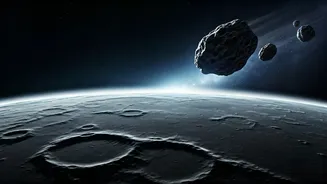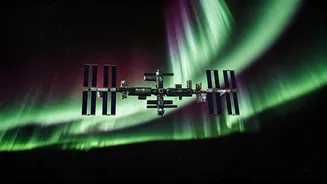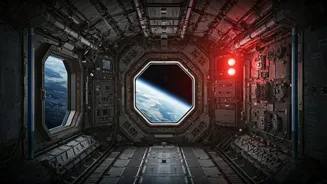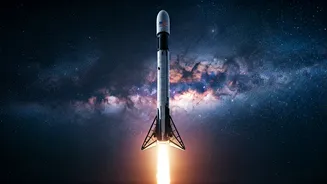The Lunar Threat
The asteroid 2024 YR4, first spotted on December 27, 2024, by the Asteroid Terrestrial-impact Last Alert System (ATLAS) telescope in Chile, has become
a focal point for scientists. While initial assessments showed a 1% chance of Earth impact on December 22, 2032, followed by a revised estimate of 3.1%, NASA later concluded that there was no significant impact risk to Earth. However, the focus has shifted to a potential collision with the Moon. As of now, there's a 4% chance of impact. Such an event would not only create a crater potentially up to 1 kilometer wide but also eject significant amounts of debris. This raises concerns about the safety of satellites and the International Space Station (ISS).
JWST’s Critical Role
The James Webb Space Telescope (JWST) is set to play a pivotal role in assessing the asteroid's trajectory and the potential for a lunar impact. JWST's unique infrared capabilities make it exceptionally well-suited for such observations, particularly for objects of the decameter scale. Upcoming observations are scheduled during narrow viewing windows in February 2026. The data gathered during these periods will be invaluable in determining the best approach to use if a more urgent observing program is needed should another asteroid pose a threat in the future. Planetary scientist Dr. Andrew Rivkin emphasized the importance of these observations for future threat assessment and potential mitigation strategies. Moreover, initial findings revealed that there was a 1% chance of hitting Earth on December 22, 2032. Later, it was estimated slightly higher at 3.1%.
Probability Shifts & Concerns
The probability of 2024 YR4 impacting the Moon could climb significantly. While the current estimated impact probability stands at 4%, upcoming observations by JWST could push this figure past 30%. A team of scientists previously indicated that, based on current understanding, there is an 80% chance of the lunar impact odds dropping below 1%, alongside a 5% possibility that the odds might exceed 30%. This highlights the uncertainty and the need for immediate attention. The asteroid is approximately 53-67 meters in diameter, making it comparable to a 10-story building.
Deflection Strategies Explored
With a potential lunar impact looming, scientists are actively exploring ways to deflect the asteroid. NASA and the European Space Agency are actively considering several strategies. Amongst the options under consideration is detonating a nuclear bomb near the asteroid. However, no concrete plans have been implemented yet. The urgency is amplified as scientists need to expedite their work. An April publication emphasized the significance of determining an asteroid's size in order to assess the destructive power of an impact.
Asteroid 2024 YR4 Timeline
The discovery of asteroid 2024 YR4 occurred on December 27, 2024, by the ATLAS telescope. In April, a team of scientists shared their insights on the object's potential impact. They noted that the asteroid reached its peak Earth impact probability in 2032 at 3%, which highlighted the importance of determining its size. JWST will have viewing windows in February 2026, offering crucial opportunities to study the asteroid's trajectory and potential impact. The first part of 2026, the team added, will be a challenging target for JWST. Moreover, in April, a team of scientists said, 'The destructive power of an impacting asteroid is primarily estimated by knowledge of its size. Asteroid 2024 YR4 reached a peak 2032 impact probability with Earth of 3%, motivating a desire to determine its size.'













